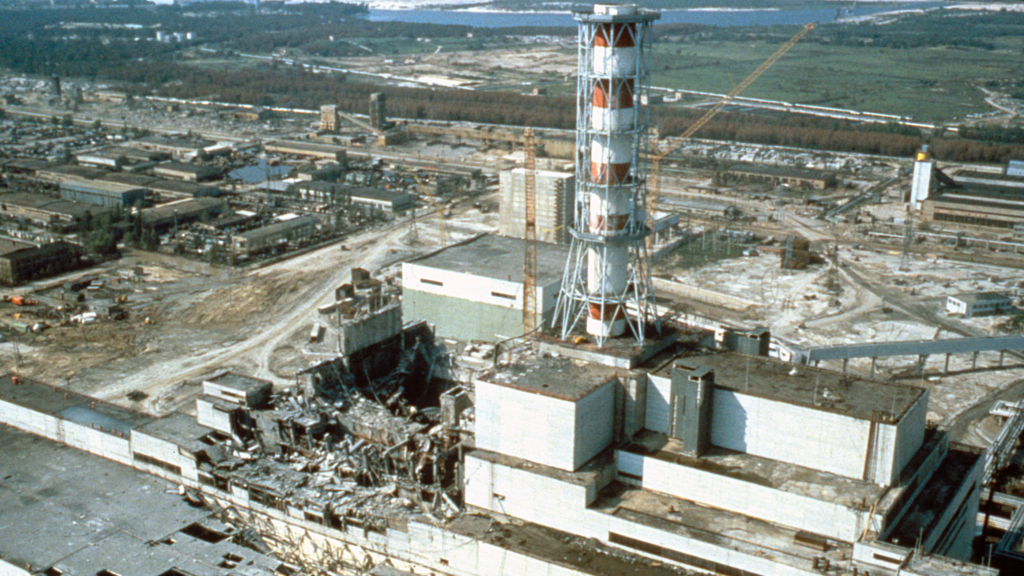The Chernobyl disaster is one of the worst nuclear accidents in history. On April 26, 1986, Reactor No. 4 at the Chernobyl Nuclear Power Plant in Pripyat, Ukraine (then part of the Soviet Union), exploded. This explosion released a huge amount of radioactive material into the air. The disaster happened because of a mix of bad reactor design, human mistakes, and poor safety practices. The Chernobyl nuclear disaster remains a crucial study in nuclear safety.
“To be a hero, you had to have courage. But to be one of the liquidators, you had to have madness.

What Caused the Explosion?
The reactor at Chernobyl had a major design flaw. It used a type of reactor called RBMK, which could become unstable if too much steam built up inside. During a safety test, the operators made several mistakes. They let the reactor’s power drop too low, making it unstable. Then, they removed too many control rods, which are used to keep the reactor safe. When they tried to shut it down, the reactor’s design caused a sudden power surge, leading to a massive explosion. This sequence of errors and flaws culminated in the infamous Chernobyl nuclear disaster.
Mistakes That Made It Worse
Several things went wrong in the moments leading up to the Chernobyl nuclear disaster:
- Ignoring Safety Rules: The operators turned off important safety systems.
- Lack of Training: Many workers didn’t understand how dangerous the reactor could be.
- Bad Reactor Design: The reactor’s flaws made the situation worse.
- Poor Communication: Leaders weren’t told about the risks, and after the explosion, they didn’t act quickly enough.
What Happened After the Explosion?
The explosion killed two workers right away, but the real danger was the radiation. Firefighters rushed to the scene without protective gear and were exposed to deadly radiation after the Chernobyl nuclear disaster. The Soviet government didn’t tell people about the danger right away, and it took almost 36 hours to evacuate the nearby town of Pripyat. This delay put thousands of lives at risk.
To stop the radiation from spreading, the government sent in hundreds of thousands of workers, called “liquidators.” They put out the fire, cleaned up the radioactive debris, and built a concrete structure (called a sarcophagus) to cover the reactor.
“Every lie we tell incurs a debt to the truth. Sooner or later, that debt is paid.” – HBO’s Chernobyl (2019)

Heroic Efforts to Save Lives:
Despite the mistakes, many people acted bravely to limit the damage after the Chernobyl nuclear disaster:
- Firefighters: They risked their lives to put out the fire.
- Miners and Engineers: They worked under dangerous conditions to stop the reactor from overheating.
- Liquidators: These workers cleaned up the area and built the sarcophagus.
- Evacuation: Over 50,000 people were eventually moved out of Pripyat, saving many lives.
The Long-Term Effects
The Chernobyl disaster had serious long-term effects:
- Health Problems: Many people got sick from radiation, including cancers and other illnesses.
- Environmental Damage: The area around Chernobyl is still too radioactive for people to live in.
- Global Changes: The accident led to stricter safety rules for nuclear power plants worldwide. The Chernobyl nuclear disaster also significantly influenced nuclear policy and procedures.
Conclusion:
The Chernobyl disaster was a tragic event caused by a mix of bad design, human error, and poor leadership. But the bravery of the firefighters, workers, and scientists helped prevent an even bigger catastrophe. Today, Chernobyl reminds us of the dangers of nuclear power and the importance of safety. While the area remains empty, the lessons learned from the Chernobyl nuclear disaster continue to shape how we use and manage nuclear energy.
“Chernobyl is a catastrophe of the past, but its lessons are for the future.” – Mikhail Gorbachev
Check it out ! Trapped in Bone: The Mystery of Stone Man Disease (FOP)










